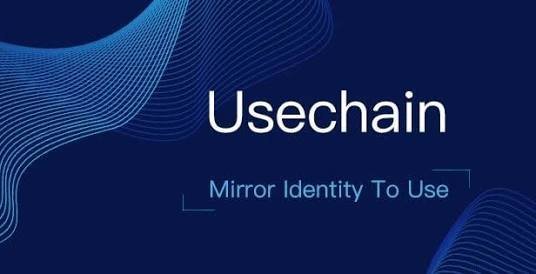USECHAIN: Comparing It With Other Existing Blockchain In Terms Of Technical Framework And Details Of Blueprints
Introduction
The blockchain technology have amassed public adoption since it's emergence, however, it is not without flaws. In the search to perfect this flaws, various blockchain networks have been developed, but with little success.
This calls for the introduction of Usechain platform, whose main aim is to help solve the shortcomings of existing blockchain networks.
Due to this, a number of unique features needs to be incorporated to the technical framework of the Usechain network which will separate it from existing blockchain networks.

About Usechain And The Comparison With Other Blockchains
Usechain will create the first public blockchain that will be built integrating the mirror identity protocol with advance level technological and structural designs, capable of solving the challenges that have impeded the growth of the blockchain network. Thereby, going a long way in inserting a much needed change in terms of scalability, performance, security, while also running a full credit decentralized system.
The comparison of Usechain and other blockchain networks on the basis of technical framework and details in the blue print will be based but not limited to the following advance features;
• Randomized Proof Of Work (RPOW) Agreement Algorithm
• Sharding
• Multi-Level Authentication
• Zero-Knowledge Proof
• Identity Virtual Machine
• Light Node Client
• Online Fault Tolerance
Consensus Algorithm Comparison: Agreement algorithms are really essential to the functionality of blockchain networks, their procedures are used to achieve the system. Arrays of consensus algorithms have been developed by existing blockchain networks (Bitcoin, Ethereum, Eos e.t.c), but none have come close to achieving the desired level of efficiency, performance, security, while also keeping the entire system decentralized. This allows Usechain to introduce the RPOW (Randomized Proof Of Work) consensus algorithm that will be the power house of the platform. This will allow large frequency transactions to be confirmed in a random manner in a bid to allow balance in the hashing force and mining power of users. This will increase scalability and speed on the blockchain, while also keeping transaction cost low, which is not feasible on the consensus algorithms adopted by existing blockchain networks.
Sharding: Sharding is simply a process where transactions are verified in very fast manner. This features is unavailable in other blockchain networks which accounts for the long length of time required to confirm a transaction. Usechain will incorporate this feature into the blockchain network through the KazaA P2P protocol which will be blended with INS (Identify Network Sharding), and ITS (Identify Transaction Sharding) strategies that will be designed.
Through this, transaction of an exact address of a user will be confirmed within the boundary of the Sharding with which the address belongs. This will eradicate the need for confirmation of blocks as required by existing networks. This makes Usechain a winner in the transaction speed compartment.
Multi-Level Authentication: The Usechain framework design will adopt a cryptographic solution to establish a multi level commonality mechanical operation between the on-chain address and the identity of authorized users, thereby maintaining a privacy security. This allows irrelevant information/data not to be exposed in the relationship and thus, sharing of private data on the network is impossible.
Zero-Knowledge Proof: In order to access information/data on the Usechain network, a proof of knowledge is needed from the user. This ensures that information on the network will be protected and kept away from third parties. This framework is unavailable in existing blockchain networks and shows why Usechain is the future of actualizing the main goal of blockchain technology, which is decentralization.
Identity Virtual Machine: Other networks do not come close to Usechain in the the standard required to build an efficient smart contracts that are modifiable. Usechain will introduce this feature through the use of the Identity Virtual Machine (IVM), with an intermediate interaction layer. The IVM will blend with the underlying blockchain, outside APIs, and make up for the shortcomings of the Ethereum Virtual Machine (EVM), and create smart contracts that are efficient when executed, while also communicating with external APIs and extending App scenarios.
Light Node Client: Usechain will adopt an advanced level Merkle Tree BCMT, which is absent in existing networks to attain transactions and confirmation status. This will efficiently minimize the large amount of data the Light Node Client requires to verify the accuracy of data/transactions on the blockchain network.
Online Fault Tolerance: This framework design allows the Usechain blockchain to carry out transactions and confirmation process at the same TPS even when an exact node is faulty or encounters a fork. This node will be frozen and separated using the single identify mapping.
Conclusion
From the above comparison in terms of technical framework and blueprint details, it is clear to see why Usechain is the future of blockchain and why users of the network are in for a great ride, as they will be provided with an experience that is different to what is being offered by the existing blockchain networks.
For more details and information about Usechain, please visit the following links;
Website: https://www.usechain.net
Whitepaper: https://www.usechain.net/usechain_en.pdf
Blog: https://medium.com/@usechain/
Twitter: https://twitter.com/usechain
Facebook: https://www.facebook.com/UsechainFoundation/
Telegram: https://t.me/usechaingroup
Telegram Username: @Feyishayor